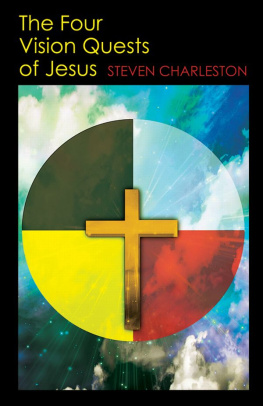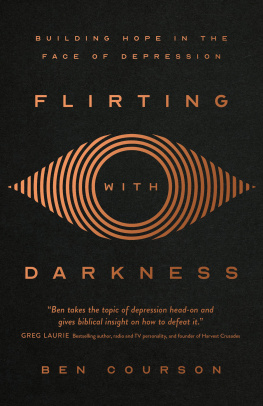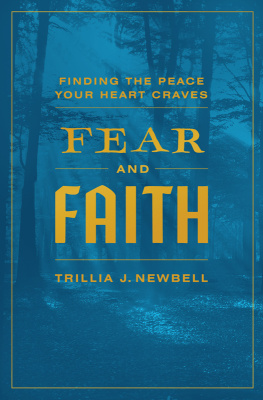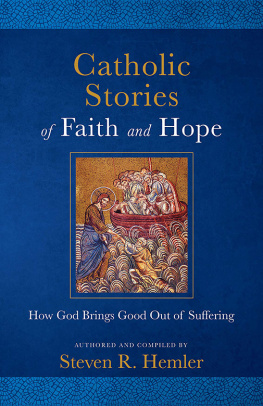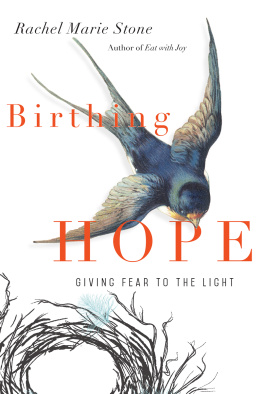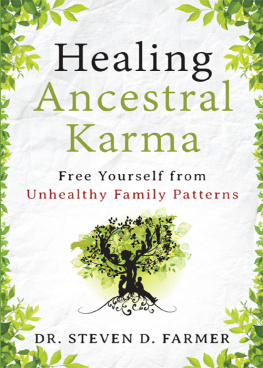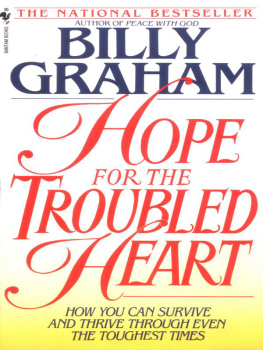Here is wisdom born out of a lifetime of listening faithfully to the voice of God. Here is wisdom we need for the living of these days.
Rev. Michael B. Curry, presiding bishop of the Episcopal Church and author of The Power of Love
This book touched me as few do, which I take as proof that the author is in cahoots with the Spirit. Steven Charleston is a spiritual medic who has given himself to a life of healing, and you will want to share his medicine with everyone you know.
Barbara Brown Taylor, author of Learning to Walk in the Dark and other books
What an anchoring bookthe wisdom in it is distilled through many traditions, and is available to us all!
Bill McKibben, environmental activist and author of Falter and other books
Ladder to the Light isnt a book to be read once and put aside, but one that should be read again and again, becoming part of our human journey. I highly recommend this book for all who are searching for a better way of belonging.
Kaitlin B. Curtice, author of Native and Glory Happening
Defying conventional notions of religion, Steven Charleston places our feet on a trail of faith, blessing, and hope, leading us to truth and transformation. Through Native traditions and culture, we see a new vision of todays societya tribal community of human beings moving toward justice as we search for the sacred.
Thom White Wolf Fassett (Seneca), author of Giving Our Hearts Away: Native American Survival
Steven Charlestons book is a prophetic guide to the life of faith. He masterfully weaves together the wisdom of Indigenous theology with the voice of the Spirit. Charleston illuminates the way the Spirit brings us into its loving presence, transforming us into a people equipped to do the work of love for ourselves, our communities, and our world.
Sarah Bessey, author of Miracles and Other Reasonable Things and other books
Copyright 2021 Steven Charleston. Printed by Broadleaf Books, an imprint of 1517 Media. All rights reserved. Except for brief quotations in critical articles or reviews, no part of this book may be reproduced in any manner without prior written permission from the publisher. Email copyright@1517.media or write to Permissions, Broadleaf Books, PO Box 1209, Minneapolis, MN 55440-1209.
3
Introduction: The Vision of the Kiva
f you have ever traveled among the Native American nations of the Southwest, you are probably familiar with the kiva. The kiva is a square or circular underground chamber, covered by a roof of wooden beams with an opening in the center. You enter a kiva the same way you enter a submarine: by descending the ladder. Once inside the packed earth chamber of the kiva, you are in darkness. Without a fire in the kiva, the only light comes from above you. To reach it, you have to ascend the ladder.
The kiva is sacred space. It serves the same function as a cathedral, as a place of worship. Yet while a cathedrals soaring arches or a mosques great domes are designed to point us upward, the kiva is intended to point us downward. The spiritual focal point is not above us, but below. We are not to look up, but down. What we seek is not in the sky, but in the earth.
This dramatic shift in our spiritual orientation is important. The kiva points us in a new direction: not an escape from this world, but an entering into it. The kiva is a womb. It is a place of origins. It is where, according to my ancestors teachings, life first began. As the tribe of the human beings, we began our existence in the womb of the earth, beneath the surface, in a place of darkness. Through many different incarnations of life on this planet, we finally emerged into the light. We climbed the ladder not to heaven, but to home. We came out exactly where we were supposed to be: in this reality, surrounded by all the other life forms of creation. We emerged ready to begin our migrations across the globe, discovering more light wherever we go.
The spiritual resilience of North Americas indigenous peoples is legendary. Our traditional religious practices were banned. Our sacred objects were taken from us and either destroyed or put in museums as a curiosity for our conquerors. Our families were scattered into diaspora. Even our languages were forbidden.
But we are still here. Our voice is still strong. Our vision is unimpaired. Native America knows something about resisting darkness. It is what we have been doing for more than five hundred years.
The kiva symbolizes this spiritual resilience. It reminds us that we began in darknessnot the stark, ominous darkness we imagine we face today, but the nurturing darkness of the womb, a place of formation and growth. Over time, through the grace of the Spirit, we learned more, understood more, until we matured and were ready to take our place in the bright world of reality. We emerged from Mother Earth. At first we were weak and unsteady on our feet, like any newborn. But with the support of the earths other creatures, we soon stood up together, formed communities, and began living in the way the Spirit instructed us.
My purpose here is to lift up the kiva as a metaphor for our contemporary spiritual situation. In that context, the vision of the kiva is not just for Native Americans, but for all who will receive it. It is a symbol for our shared future. It tells us that if we are in a time of darkness, we need not be afraid of it, because it is only the beginning for us. In other words: we have been down this spiritual road before. The kiva tells us we have been through this process of birth and rebirth more than once. As a people, we have entered into darkness before, only to emerge into light.
To help us understand the kivas contemporary relevance to our situation today, let me share one encounter that illustrates the kind of darkness I believe we inhabit. Several years ago, I was standing in a parish hall at a church in New England, speaking to an audience of largely professional people with comfortable incomes. They were well educated, well read, and alert to the news of the day. By all of societys measuring sticks, they should have been among the best and brightest and most optimistic, the bedrock of an enlightened spiritual community. They should have been confident, but they were not. In fact, they were just the opposite. They were worried.
The depth and nature of their worry was revealed in how they responded when I asked them to name one institutionone public system in our culturein which they still had complete confidence.
Would that be in our educational system? I asked. The room was silent.
Our political system? Silence.
Our judicial system? Silence.
Our health care system? Silence.
How about our religious institutions? Surely we still have confidence there? More silence.
As we looked at each other in the silence, we understood something profound: we are a generation that no longer believes things work. We no longer take it for granted that any of the social systems on which we depend to sustain a healthy community can continue to do so. In this darkness, we are beset by questions that make us uncertain. Can we live together in peace when we disagree? Can we accept the idea that change and tradition are not mutually exclusive? Can we realize that diversity is an innate human characteristic? Can we understand that our ecosystem is a survival pod with limited range and resources? Can we learn that having more for the few is not as important as having enough for the many? The questions become a world of shadows and fears.


